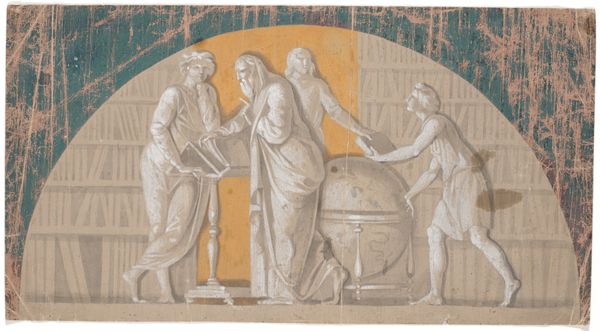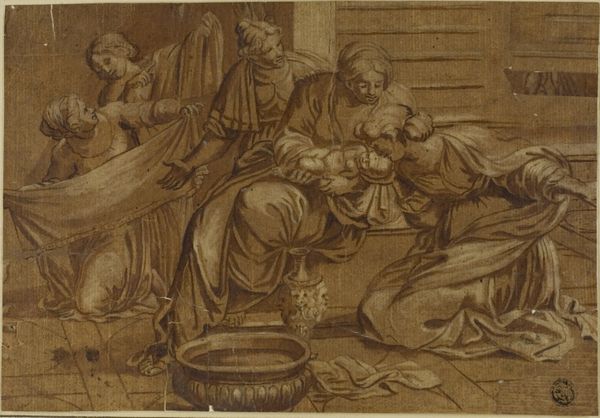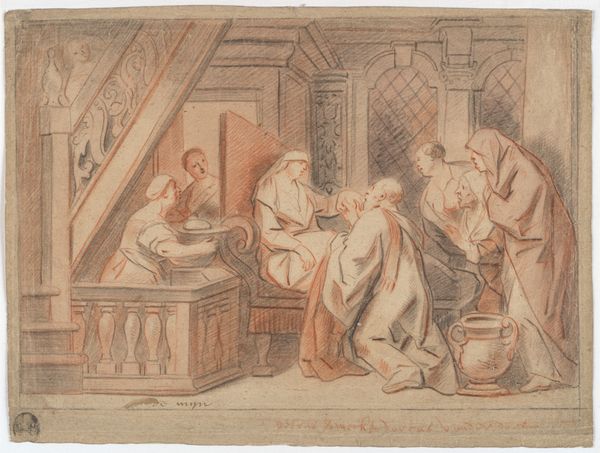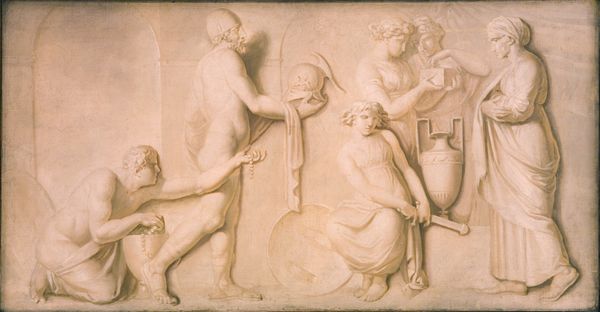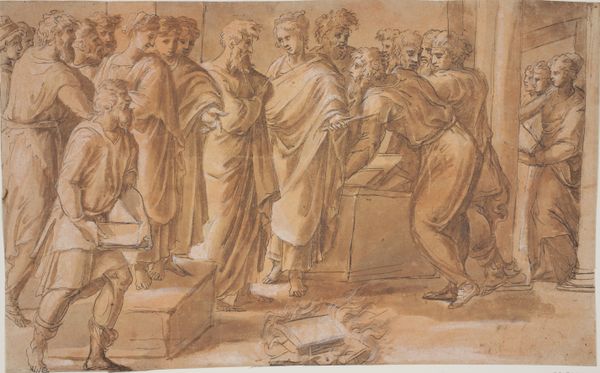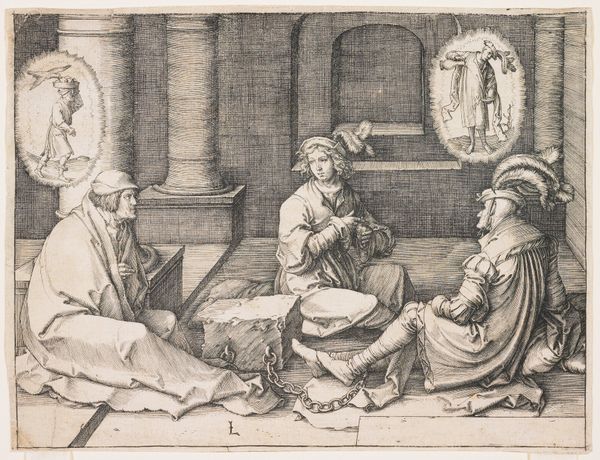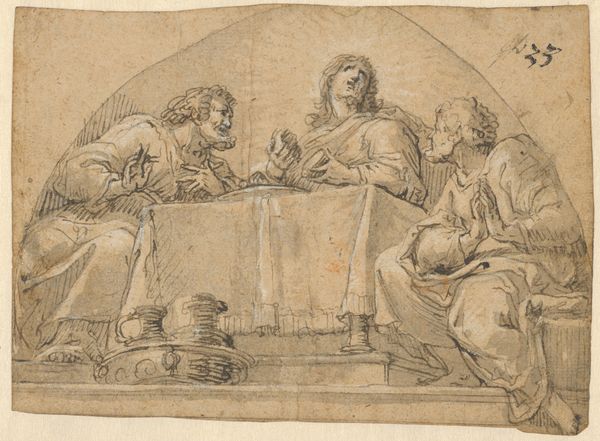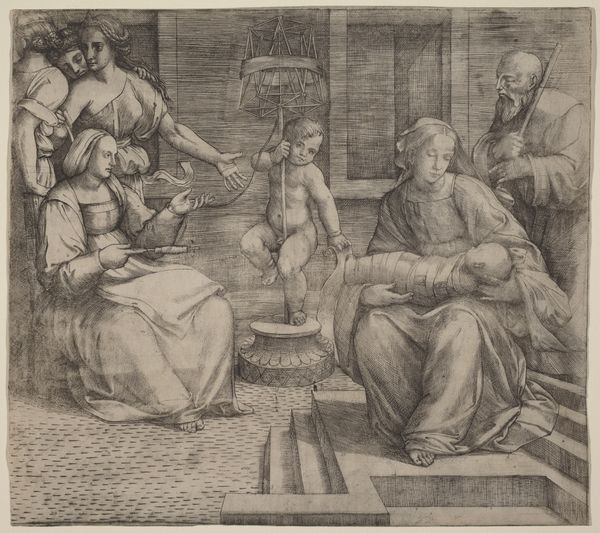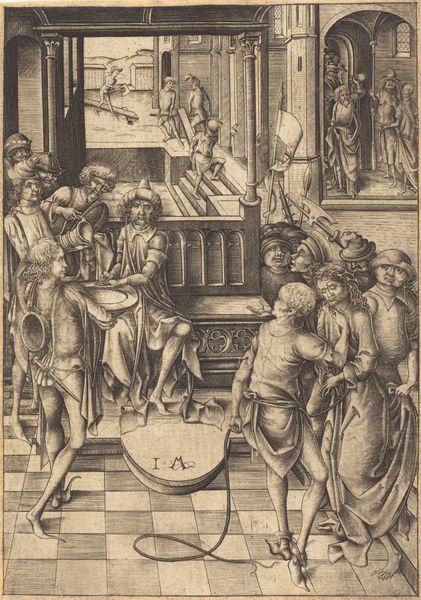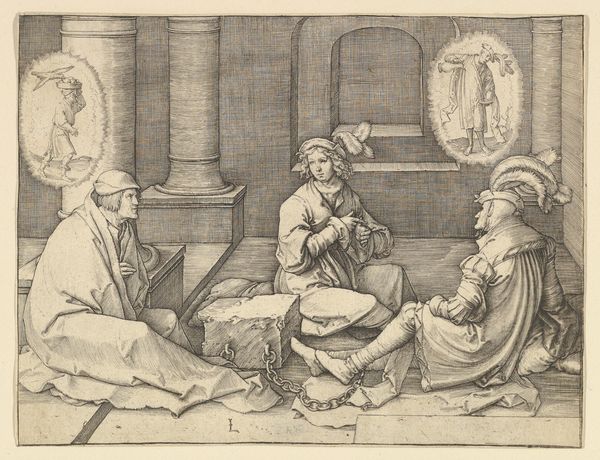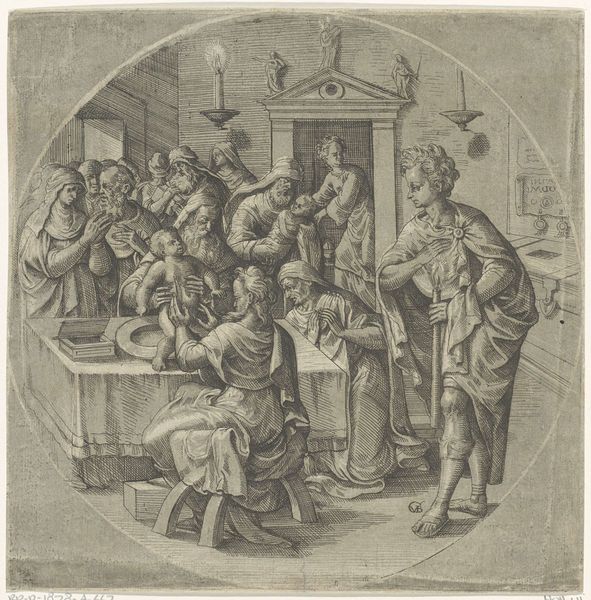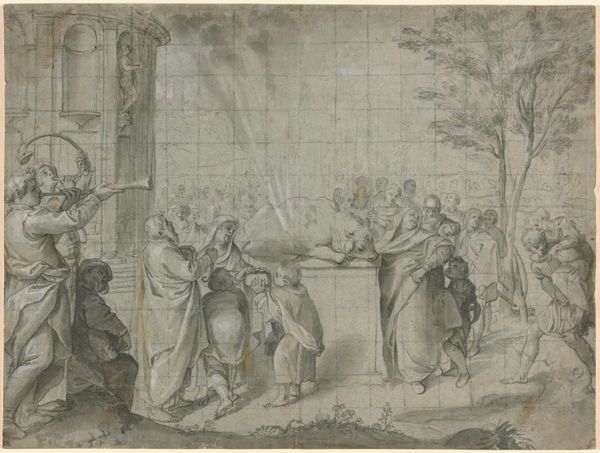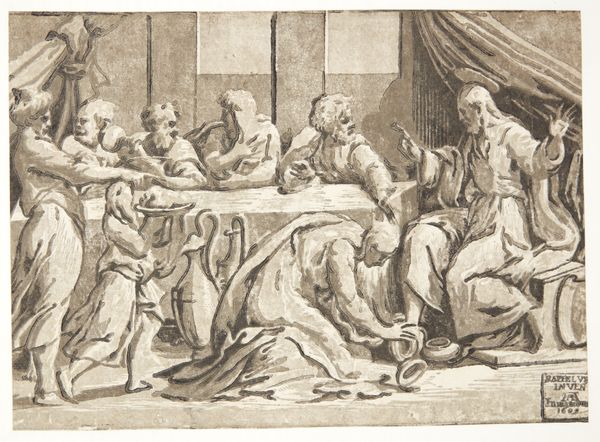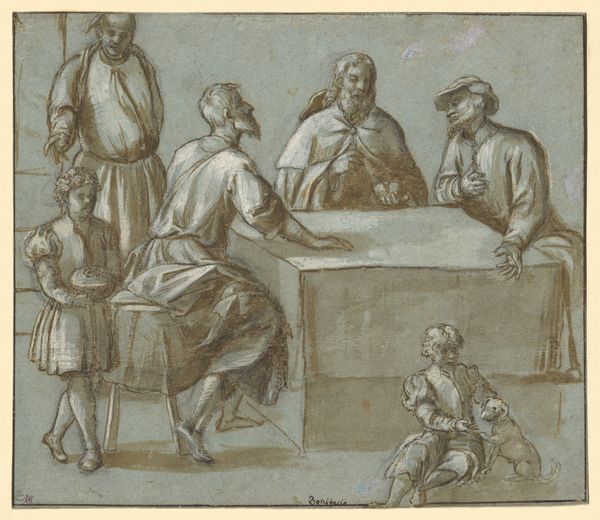
panel, tempera, painting, canvas
#
portrait
#
neoclacissism
#
panel
#
narrative-art
#
tempera
#
painting
#
classical-realism
#
perspective
#
figuration
#
oil painting
#
canvas
#
classicism
#
group-portraits
#
history-painting
#
academic-art
Dimensions: 19 cm (height) x 36.5 cm (width) (Netto), 29 cm (height) x 46.1 cm (width) x 2.6 cm (depth) (Brutto)
Curator: Standing here, we're looking at Nicolai Abildgaard's “The Foundation of the Royal Library,” painted between 1781 and 1784. It's a tempera on panel, and it captures a pivotal moment in the establishment of a national institution. Editor: It strikes me as initially monochromatic; almost sculptural. Like a bas-relief rendered in paint. I'm also immediately drawn to the rather unconventional semi-circular shape—almost like an early concept for a pediment. Curator: That’s an astute observation. This piece exists in the context of the Neoclassical movement, during which artists drew on classical antiquity. Abildgaard, like many others, situated his artistic project in relation to those ideals of enlightened governance and intellectual rigor, evident not just in the style, but the very subject of the piece. Who has access to knowledge and under what circumstances are vital issues here. Editor: Right, and speaking of material access, observe the books that appear crammed onto the shelves. These seem to function as objects—physical conveyors—of learning, knowledge, and thus social power, underscoring the importance of the Library's collection and its contribution to constructing enlightened civic consciousness. Curator: Absolutely. I want to pick up on your point about it feeling like a sculpture, with figures robed like classical statues. The figures represent the embodiment of this era’s virtues—wisdom, diligence, foresight. They also indicate gendered norms that played out at the time—note that the man’s knowledge is supported by the woman, quite literally holding up a book. Editor: Note also the world globe. How interesting that in its materiality the library's collection is bound by Europe and not elsewhere! This globe seems an early model – made by certain means, with certain labor practices. Was this accessible at this time? Curator: And note the arc shape! What does it signify here— a heavenly bow, the rise of dawn on enlightened progress? How is such intellectual material organized and from whose perspective does this intellectual archive extend? The history and its social framework seem intertwined here. Editor: The means by which artistic practices and social ideologies coalesce is quite visible here—indeed something for a society to celebrate for generations through artistic visual language and design. Curator: Yes, understanding it in this light gives a rich sense of not only the past’s visual aesthetics, but a social imaginary, or in this instance, social materiality—an idea that is still in progress today.
Comments
No comments
Be the first to comment and join the conversation on the ultimate creative platform.
